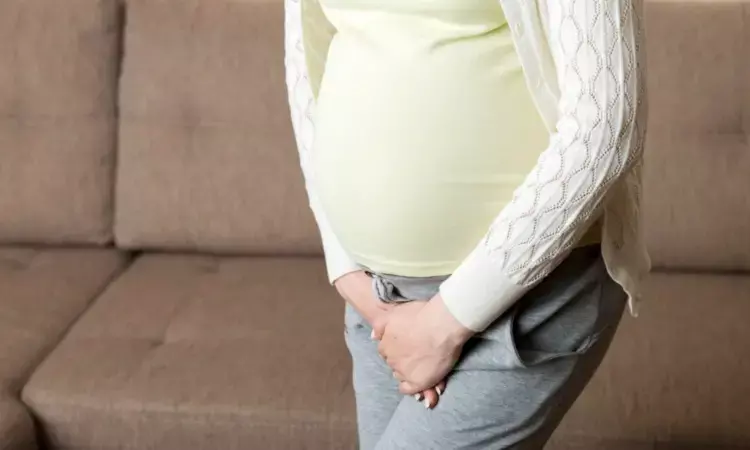- Home
- Medical news & Guidelines
- Anesthesiology
- Cardiology and CTVS
- Critical Care
- Dentistry
- Dermatology
- Diabetes and Endocrinology
- ENT
- Gastroenterology
- Medicine
- Nephrology
- Neurology
- Obstretics-Gynaecology
- Oncology
- Ophthalmology
- Orthopaedics
- Pediatrics-Neonatology
- Psychiatry
- Pulmonology
- Radiology
- Surgery
- Urology
- Laboratory Medicine
- Diet
- Nursing
- Paramedical
- Physiotherapy
- Health news
- Fact Check
- Bone Health Fact Check
- Brain Health Fact Check
- Cancer Related Fact Check
- Child Care Fact Check
- Dental and oral health fact check
- Diabetes and metabolic health fact check
- Diet and Nutrition Fact Check
- Eye and ENT Care Fact Check
- Fitness fact check
- Gut health fact check
- Heart health fact check
- Kidney health fact check
- Medical education fact check
- Men's health fact check
- Respiratory fact check
- Skin and hair care fact check
- Vaccine and Immunization fact check
- Women's health fact check
- AYUSH
- State News
- Andaman and Nicobar Islands
- Andhra Pradesh
- Arunachal Pradesh
- Assam
- Bihar
- Chandigarh
- Chattisgarh
- Dadra and Nagar Haveli
- Daman and Diu
- Delhi
- Goa
- Gujarat
- Haryana
- Himachal Pradesh
- Jammu & Kashmir
- Jharkhand
- Karnataka
- Kerala
- Ladakh
- Lakshadweep
- Madhya Pradesh
- Maharashtra
- Manipur
- Meghalaya
- Mizoram
- Nagaland
- Odisha
- Puducherry
- Punjab
- Rajasthan
- Sikkim
- Tamil Nadu
- Telangana
- Tripura
- Uttar Pradesh
- Uttrakhand
- West Bengal
- Medical Education
- Industry
Study Warns of Increased Risk of Postpartum Urinary Retention Following Cesarean Section

China: A recent retrospective analysis based on a nationwide inpatient sample has found that postpartum urinary retention (PUR) affects around 0.20% of women undergoing cesarean section (CS) in the United States. Although relatively rare, PUR is clinically significant due to its association with various risk factors and adverse outcomes.
The study showed that women aged 25 and older, especially those above 35 and those with pre-existing comorbidities (OR 1.51–1.79) were more likely to develop PUR. Conditions such as fluid and electrolyte imbalances (OR 2.46), paralysis (OR 3.24), and recent weight loss (OR 2.34) further elevated the risk.
"Key contributing complications included catheter placement (OR 22.57), bladder and renal injuries (OR 6.12), renal failure (OR 4.74), and puerperal infections (OR 3.31). On the other hand, a history of prior CS and undergoing low cervical cesarean deliveries appeared to reduce the risk, indicating a potential protective effect," the researchers reported in BMC Women’s Health.
Jian Wang from Southern Medical University, Guangzhou, China, and colleagues conducted the study. Their goal was to assess risk factors for PUR after cesarean delivery and evaluate associated morbidity using a population-based retrospective case-control design.
For this purpose, the team analyzed data from the National Inpatient Sample (2010–2019), categorizing women based on whether they experienced PUR post-CS. Multivariate logistic regression was used to identify predictors, adjusting for maternal demographics and clinical variables.
Key findings included:
- Analysis of 2,397,168 cesarean deliveries from the NIS database.
- PUR incidence stood at 0.20%.
- Affected patients had longer hospital stays, higher medical costs, and more complications.
- The risk was elevated in women aged ≥25, particularly ≥35.
- Asian and Pacific Islander women had a higher PUR risk.
- One or more comorbidities significantly increased the likelihood.
- Deliveries at large, teaching or Eastern hospitals were more prone to PUR.
- Coagulation disorders, electrolyte disturbances, neurological issues, paralysis, and recent weight loss were notable risk factors.
- PUR was linked to complications such as bladder or ureteral injury, acute renal failure, respiratory failure, endometritis, hemorrhage, uterine rupture, hysterectomy, peritonitis, puerperal infections, and chorioamnionitis.
- Obstetric factors like cephalopelvic disproportion, fetal malposition, placenta previa, multiple gestation, and abnormal bladder anatomy raised the risk.
- Bladder catheter placement and IV infusion were strongly associated with PUR, with catheter use showing the highest odds.
- Conversely, previous CS, low cervical CS, and cord prolapse were associated with reduced PUR risk.
The authors concluded that PUR is relatively uncommon, however, it carries significant clinical implications. They stressed the need for antenatal screening to identify high-risk patients and advocated for an elective over emergency CS when feasible.
"Early intervention during the antenatal and postnatal periods could help mitigate the risk and improve patient outcomes," they wrote.
Reference:
Zhang, F., Huang, J., Huang, X. et al. Incidence and risk factors of postpartum urinary retention following cesarean section: a retrospective nationwide inpatient sample database study. BMC Women's Health 25, 180 (2025). https://doi.org/10.1186/s12905-025-03728-w
Dr Kamal Kant Kohli-MBBS, DTCD- a chest specialist with more than 30 years of practice and a flair for writing clinical articles, Dr Kamal Kant Kohli joined Medical Dialogues as a Chief Editor of Medical News. Besides writing articles, as an editor, he proofreads and verifies all the medical content published on Medical Dialogues including those coming from journals, studies,medical conferences,guidelines etc. Email: drkohli@medicaldialogues.in. Contact no. 011-43720751


